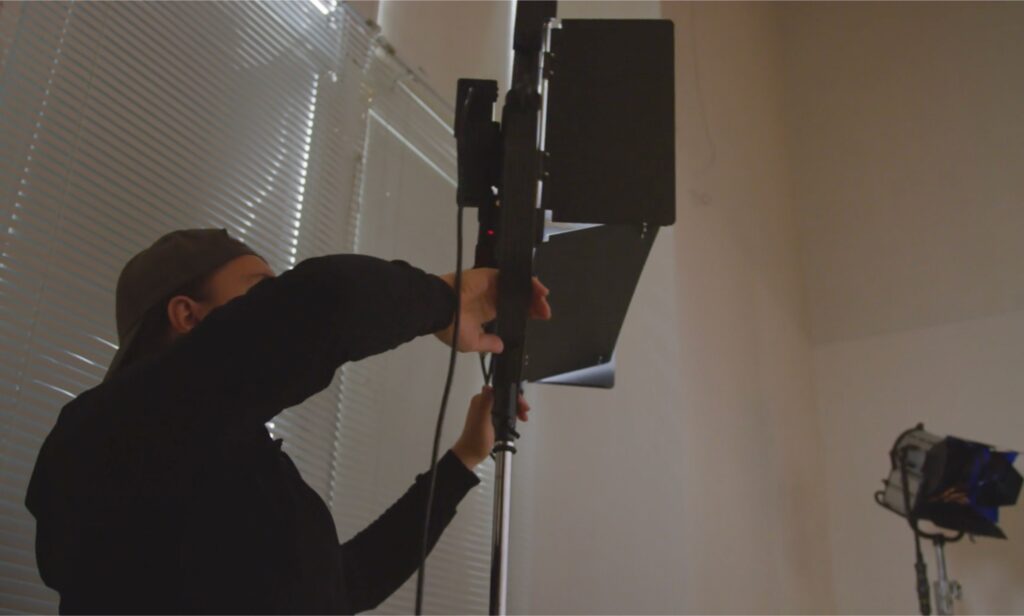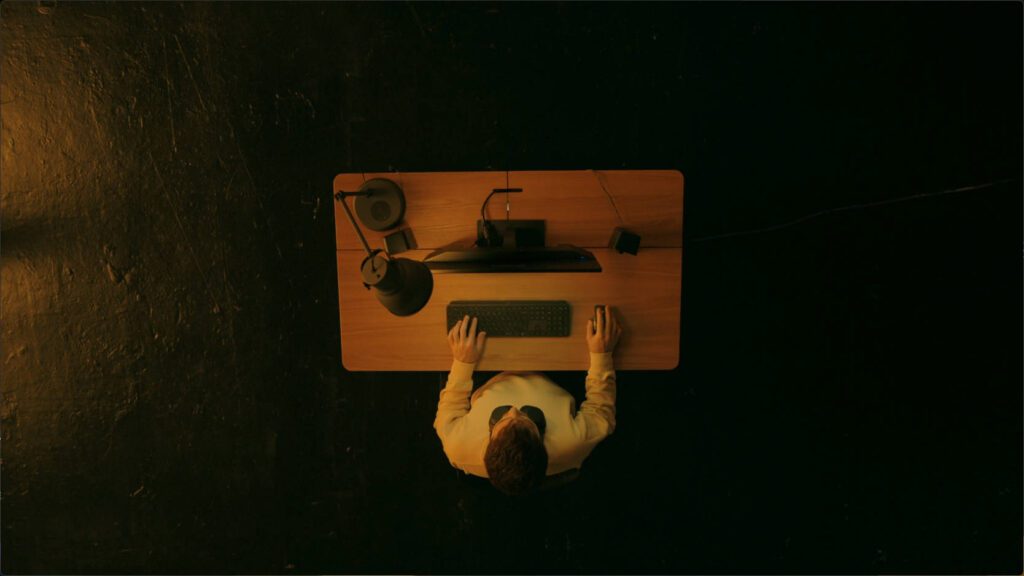In an increasingly digital world, the calibre of your company’s training materials can be a definitive factor in its success. High-quality training videos are not just tools for effective communication; they are also a reflection of your company’s commitment to excellence and professional growth. At Lumira Studio, we understand the pivotal role that top-notch video production equipment plays in creating compelling, educational content that resonates with its audience. In this extensive guide, we’ll navigate through the essentials of company training video production equipment, ensuring you’re equipped to deliver training videos that are not only informative but also technically impeccable and engaging.

Understanding the Basics of Training Video Production
Training videos are the cornerstone of a company’s educational program, blending information delivery with corporate branding. Selecting the right equipment is crucial—professional-grade gear provides the reliability, control, and quality necessary to maintain the professionalism that consumer-grade tools cannot offer. When you’re illustrating a new process or updating company protocols, the sharpness of your video and the clarity of your audio are more than just details; they are the vehicles of comprehension and retention.
Defining what company training videos entail is the first step. These resources are tailored to impart knowledge effectively and consistently, whether for onboarding, professional development, or introducing new tools and software. The right equipment ensures that your training videos meet the high standards of your company’s brand and the expectations of your employees.
Pre-Production Planning: Laying the Foundation
Effective pre-production is vital. It is during this stage that you’ll outline the scope of your project and set the stage for the equipment selection. Identifying your target audience is the first step, influencing not just the content of your training videos but also the production quality. A clear message and a detailed storyboard are the blueprints that dictate your equipment needs, while thoughtful budgeting ensures you allocate resources wisely without compromising on quality.
Camera choices, for example, should be made based on the content type and the conditions under which you’ll be shooting. Whether it’s a static shot of a presenter or a dynamic tour of a new facility, each scenario may require different specifications in terms of resolution, sensor size, and even the camera’s capacity to shoot in varying lighting conditions.
Overview of Camera Types for Optimal Training Video Production
The camera you choose is pivotal in defining the quality and effectiveness of your company’s training videos. At Lumira Studio, we recognise that selecting the right type of camera is a balance between budget constraints and desired production value. Here’s a closer look at the types of cameras you might consider:
DSLR and Mirrorless Cameras: The Versatile Contenders
DSLRs (Digital Single-Lens Reflex) and mirrorless cameras have revolutionised the video production landscape with their blend of high-quality imaging and portability. DSLRs use a mirror mechanism to reflect light from the lens to an optical viewfinder. In contrast, mirrorless cameras do away with this mechanism, relying on electronic viewfinders or the camera’s display screen.
- Canon EOS 5D Mark IV: A stalwart in the DSLR category, known for its robust build and exceptional image quality, making it ideal for training videos that require detail and depth.
- Sony Alpha a7 III: A mirrorless model offering impressive low-light performance and high-resolution 4K video capabilities, perfect for diverse shooting environments.
- Nikon Z6: This mirrorless option brings excellent video quality and is favored for its ease of use and adaptability, fitting for those who need to shoot in various locations.
These cameras are generally more cost-effective than high-end cinema cameras and offer a wide array of interchangeable lenses to fit different shooting scenarios. They’re a favorite for companies needing to produce quality videos without an extravagant budget.
Professional Video Cameras: The Dedicated Powerhouses
For those who need the absolute best in video quality and reliability, professional video cameras are the way to go. These cameras are designed with video production in mind, offering features such as XLR audio inputs for professional microphones, built-in ND filters, and robust internal codecs that allow for higher-quality recording and easier color grading in post-production.
- Canon XF705: Known for its broadcast-quality 4K recording capabilities, this camera is a workhorse for training environments requiring the highest video standards.
- Sony PXW-FS7 XDCAM: A versatile camera that excels in ergonomics and functionality, with features tailored for long-form shooting, such as extended battery life and shoulder-mount design.
- Panasonic AG-DVX200: A 4K handheld camcorder that offers excellent image stabilisation, making it ideal for active training scenarios where mobility and stability are required.
Camera Specs to Consider for Clarity and Detail
When selecting a camera, you must consider several specifications to ensure that your training videos meet a professional standard:
- Resolution: 4K resolution is increasingly becoming the benchmark. It offers greater detail, which is crucial when you need to illustrate intricate processes or display text within the video.
- Sensor Size: Larger sensors generally mean better image quality, with improved dynamic range and depth of field, which can make your training videos more visually engaging.
- Low-Light Performance: Cameras with good low-light performance are necessary if you plan to shoot in varied lighting conditions, ensuring that your video quality does not degrade in less-than-ideal light.
Choosing between DSLRs, mirrorless, and professional video cameras will largely depend on the specific requirements of your company’s training content and budget. At Lumira Studio, we provide detailed consultations to navigate the advantages and limitations of each camera type, ensuring you make an informed decision that aligns with your production needs and investment capabilities.
Importance of Camera Stability for Professional Results
Regardless of the camera type, stability is non-negotiable for professional-looking video. Unsteady footage can be distracting and undermine the perceived quality of your training material. Here’s how you can ensure stability:
- Tripods: A heavy-duty tripod is essential for static shots, talking heads, or any scenario where the camera can remain stationary. It is the backbone of a stable shoot.
- Gimbals: For more dynamic shooting conditions, a gimbal offers stabilised motion, keeping the camera smooth as you move through different scenes.
- Monopods: These are great for situations where you need a bit more mobility than a tripod offers but still require the support to keep the camera steady.
By providing stable visuals, you enhance viewer engagement and comprehension, which is critical in a learning environment. Lumira Studio’s investment in top-notch support equipment underscores our commitment to quality in every aspect of video production.
Capturing Clear Sound: Audio Recording Equipment
For a training video to be effective, its message must be heard as well as seen. Lumira Studio’s experience in producing high-quality training videos underscores the importance of premium audio recording equipment.
Microphones for Every Scenario:
- Lapel Microphones:
- Best for one-on-one instructional videos.
- Offer freedom of movement while maintaining consistent audio quality.
- Shotgun Microphones:
- Directional pick-up pattern captures sound where the microphone is pointed, ideal for noisy environments.
- Requires strategic placement for optimal sound capture.
- Condenser Microphones:
- Provide a wide frequency response and precise sound reproduction.
- Sensitive to subtle sounds, suited for voice-over work and in-studio presentations.
Table 1: Microphone Selection for Different Scenarios
| Microphone Type | Best Use Case | Features |
|---|---|---|
| Lapel Microphone | One-on-one instructional videos | Wireless, discreet, consistent audio level |
| Shotgun Microphone | Live-action settings, noisy environments | Directional audio capture, noise isolation |
| Condenser Microphone | In-studio presentations, voice-overs | Wide frequency response, sensitive capture |
Essential Audio Recorders
Audio recorders are an indispensable part of the video production arsenal, separate from your camera’s in-built microphone.
Benefits of External Audio Recorders:
- They provide superior sound quality and prevent the camera’s operational noises from being recorded.
- Multi-track recorders allow for recording multiple microphones simultaneously, which is perfect for interviews or multi-speaker scenarios.
Table 2: Audio Recorders and Accessories
| Equipment/Accessory | Purpose | Benefits |
|---|---|---|
| External Audio Recorder | Separate sound capture | Higher quality audio, isolation from camera noise |
| Multi-track Recorder | Recording multiple sources | Simultaneous multi-microphone recording |
| XLR Cables | Connecting microphones to recorders | Minimises signal loss, reduces interference |
| Windshields and Shock Mounts | Noise reduction | Protects from wind noise and physical vibrations |
Indispensable Cables and Accessories
The integrity of your audio depends significantly on the quality of your cables and accessories.
Why Quality Matters:
- Quality cables minimise signal loss and protect against electromagnetic interference.
- Accessories such as windshields and shock mounts are vital for reducing noise from wind and physical movements.

Illuminating Your Subject: Lighting and Accessories
Effective lighting is essential in creating professional-looking video content. At Lumira Studio, we place emphasis on the right lighting setup to ensure the subject is clearly visible and presented in an engaging manner.
- Three-Point Lighting Simplified:
- Key Light: Acts as the primary light source, usually positioned at a 45-degree angle to the subject’s face.
- Fill Light: Softens and eliminates shadows caused by the key light, typically placed on the opposite side of the key light.
- Back Light: Positioned behind the subject, this light creates a silhouette that defines the edges and separates the subject from the background.
- Advanced Lighting Techniques:
- LED Panels:
- Offer adjustable brightness and color temperature.
- Energy-efficient and generate minimal heat.
- Softboxes:
- Attach to lights to diffuse and spread light evenly.
- Reduce glare and soften shadows on the subject.
- LED Panels:
- Vital Lighting Accessories:
- Reflectors:
- Bounce light back onto the subject, highlighting important features.
- Diffusers:
- Spread light broadly, ideal for achieving a natural-looking light.
- Reflectors:
Table 3: Lighting Setup and Accessories
| Lighting Tool | Function | Advantages |
|---|---|---|
| Key Light | Primary light source | Highlights the subject, creates depth |
| Fill Light | Reduces shadows | Softens harsh contrasts, adds detail |
| Back Light | Separates subject from background | Adds depth, enhances contours |
| LED Panels | Adjustable main/fill light | Energy-efficient, customisable settings |
| Softboxes | Light diffusion | Creates even, soft lighting for a flattering look |
| Reflectors | Bounce light back onto the subject | Highlights features, fills in shadows |
| Diffusers | Soften and spread light | Achieves a more natural-looking illumination |
Editing Software and Computers: Bringing Your Footage Together
The final cut of any training video is crafted during post-production, where the footage is edited and enhanced to produce the final product.
- Top Editing Software:
- Adobe Premiere Pro:
- Offers a flexible editing interface and works seamlessly with other Adobe applications.
- Final Cut Pro:
- Known for its speed and advanced organisational features, optimised for Mac users.
- Adobe Premiere Pro:
- Computing Specifications for Smooth Editing:
- Processor and Graphics:
- A fast processor (such as Intel i7 or i9, or their AMD equivalents) to handle demanding tasks.
- A dedicated graphics card is vital for rendering and real-time playback.
- Memory and Storage:
- Minimum of 16GB RAM, though 32GB or more is recommended for heavier workloads.
- SSDs for the operating system and editing software, with additional high-speed storage for footage.
- Processor and Graphics:
- Storage Solutions for Video Projects:
- External Hard Drives:
- Necessary for expansive video files and project archives.
- Network-Attached Storage (NAS):
- Ideal for collaborative environments, allowing multiple users to access and edit footage simultaneously.
- External Hard Drives:
By meticulously selecting and utilising the proper equipment and software, Lumira Studio ensures that every training video we produce meets the highest standards of audiovisual excellence, ensuring that your company’s training objectives are not just met, but exceeded.
Table 4: Editing Software and Computing Requirements
| Software/Component | Function | Specifications/Features |
|---|---|---|
| Adobe Premiere Pro | Video editing software | Flexible interface, Adobe ecosystem integration |
| Final Cut Pro | Video editing software | Fast, advanced organisational tools, Mac optimised |
| Multi-core Processor | Computer’s central processing unit | Intel i7/i9 or AMD equivalent for high-speed processing |
| Dedicated Graphics Card | Real-time video rendering and playback | Necessary for 4K and high-resolution projects |
| RAM | System memory | 16GB minimum, 32GB+ recommended |
| SSD | Storage for software and active projects | Fast data access, improves workflow speed |
| External Hard Drives | Archival and backup storage | Large capacity for video file storage |
| NAS (Network-Attached Storage) | Shared storage system | Enables collaborative editing and file sharing |
Advanced Equipment Considerations
As your company delves deeper into producing training videos, there will come a time to consider advanced equipment options that can elevate the quality of your content and enhance the learning experience.
When to Use Green Screens and Teleprompters:
- Green Screens:
- Utilise green screens when you need to present complex information that benefits from dynamic visual aids or when you want to add a consistent branded background in post-production.
- They are also essential when the training requires scenarios that are impossible to shoot in a real environment due to constraints like location, safety, or cost.
- Teleprompters:
- Teleprompters are a boon when precision in delivery is required. They aid presenters in delivering lengthy and detailed content without errors, ensuring the message stays clear and concise.
- Especially useful in situations where on-screen talent must relay technical information or when scripts are frequently updated.
Monitors and Recorders for Quality Checks:
- Monitors:
- Video monitors are indispensable on set for real-time quality checks. They provide a more accurate representation of the final image than the small screens on most cameras.
- Use monitors to check composition, exposure, focus, and color so that any issues can be corrected during production rather than in post, saving valuable time and resources.
- Recorders:
- External recorders can capture higher quality footage than many in-camera recorders, providing a backup and often recording in formats that are easier to edit.
Live Streaming Equipment for Real-Time Training:
If your company’s training involves real-time interaction, then live streaming equipment is necessary.
- You’ll need a reliable encoder to convert your video files for streaming.
- A robust internet connection and a streaming platform that can handle the audience size without lag are crucial.
- Consider multi-camera setups and switching equipment for a more dynamic presentation.
Best Practices for Equipment Usage
Having the right equipment is just the beginning; knowing how to handle and maintain it is vital for longevity and performance.
Tips on Handling and Maintaining Equipment:
- Always store equipment properly, using protective cases to prevent dust accumulation and moisture damage.
- Regularly clean lenses and check for firmware updates for all electronic devices.
- Manage cables carefully to avoid tripping hazards and to prolong their lifespan.
Training Staff to Use Video Production Equipment Effectively:
- Provide comprehensive training sessions for your staff. Knowledge of equipment not only leads to better videos but also extends the life of the equipment.
- Ensure that all users are familiar with the safety protocols and handling instructions of each piece of equipment.
Staying Updated with Technology Trends:
- Stay abreast of the latest advancements in video production technology to ensure your content remains competitive.
- Attend workshops, subscribe to industry publications, and network with technology vendors to keep your knowledge current.
Conclusion
Throughout this article, we’ve traversed the landscape of company training video production equipment, detailing everything from essential gear like cameras and microphones to advanced tools such as green screens and live streaming setups.
Investing wisely in equipment is not a mere expenditure but a strategic move towards enhanced learning outcomes. The right tools in the hands of a skilled team can lead to training videos that are not only informative but also engaging, helping to solidify your company’s commitment to quality and education.
Lumira Studio encourages companies to view equipment as an investment in their most valuable asset: their employees. By equipping your team with the right tools, you’re setting them—and your company—up for success. The clarity, engagement, and professionalism that high-quality training videos bring to the table are invaluable, transforming the mundane into the compelling and the complex into the graspable.
In the rapidly evolving world of video production, staying current with technology will place your company at the forefront of training excellence. Remember, every frame counts, and with the right equipment, each frame can be a step towards greater understanding and better performance.
FAQ
Q: What is the most essential piece of equipment for company training video production? A: While all equipment plays a vital role, the camera is the cornerstone of video production. It captures the visuals that are fundamental to the learning experience.
Q: Can I use consumer-grade equipment for professional training videos? A: While consumer-grade equipment can be used, professional-grade equipment is recommended for its higher quality, durability, and advanced features that contribute to a more professional-looking end product.
Q: How important is audio quality in training videos? A: Audio quality is just as important as video quality. Clear audio ensures that the message is understood, and poor audio can be a major distraction or make content difficult to follow.
Q: Is it necessary to invest in lighting for indoor video shoots? A: Yes, proper lighting is crucial for video quality. It ensures that the subject is clearly visible, enhances the video’s professional appearance, and helps maintain the viewer’s focus on the content.
Q: What are the key considerations when selecting editing software? A: Key considerations include the software’s compatibility with your computer’s operating system, the range of editing tools and features it offers, and the level of support and tutorials available.





